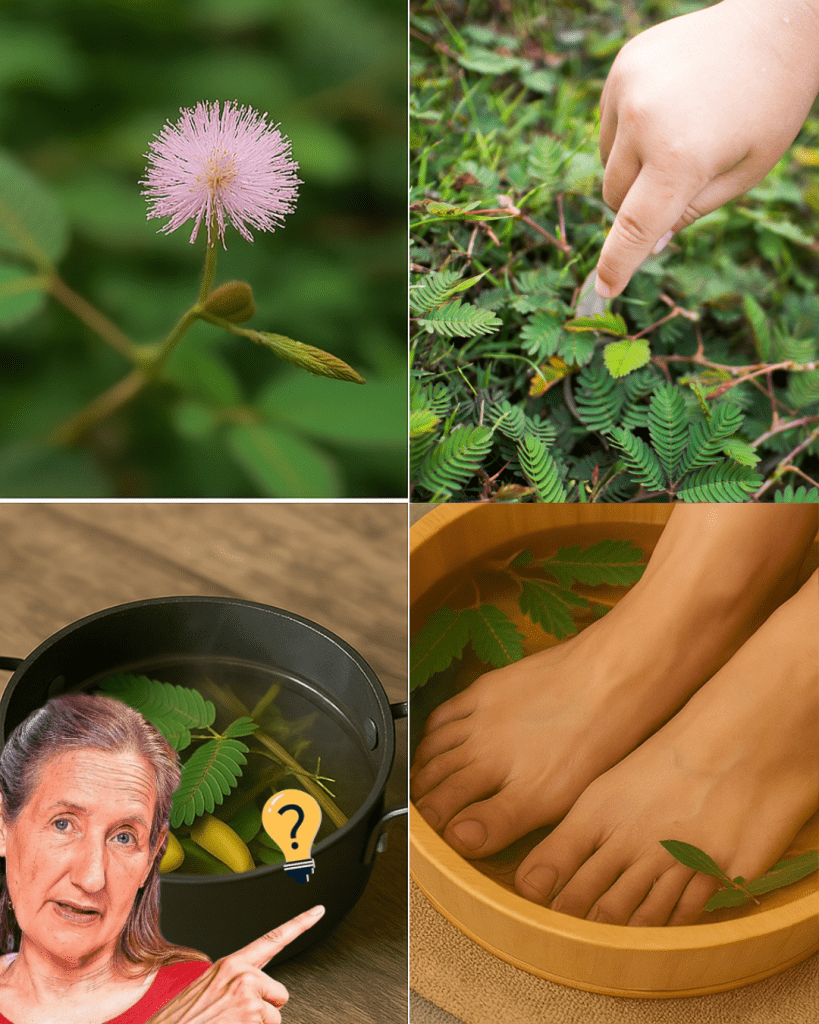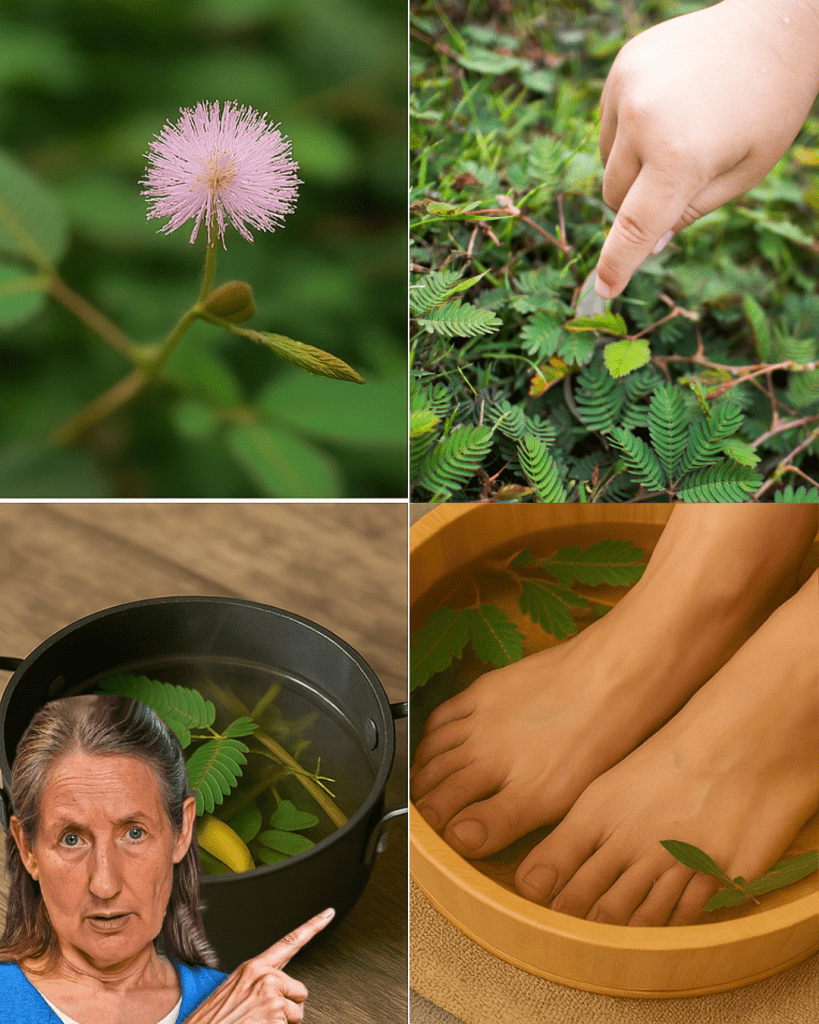Ever brushed against a plant and watched it shrink away as if shy? That’s Mimosa Pudica, the “sensitive plant,” a botanical marvel that’s more than just a quirky conversation starter. Known for its leaves that fold at the slightest touch, this tropical herb from the Americas has been used for centuries in traditional medicine, from soothing wounds to fighting parasites. If you’re curious about natural remedies or simply fascinated by plants with personality, Mimosa Pudica’s surprising benefits and easy-to-use recipes will captivate you. Ready to uncover the secrets of this bashful herb? Let’s explore why it’s stealing the spotlight in wellness circles.

What Is Mimosa Pudica? The Shy Plant with a Bold Legacy
Mimosa Pudica, often called “touch-me-not” or “shameplant,” is a creeping perennial from the pea family (Fabaceae), native to Central and South America. Its delicate, fern-like leaves close inward when touched or shaken—a phenomenon called thigmonasty—reopening minutes later. This rapid movement, driven by water shifts in specialized cells called pulvini, may protect it from predators or reduce water loss.
Beyond its playful behavior, Mimosa Pudica is a powerhouse in traditional healing systems like Ayurveda and Amazonian medicine. Packed with compounds like mimosine, flavonoids, and alkaloids, it boasts antibacterial, anti-inflammatory, and antiparasitic properties. While it’s a beloved houseplant for its curiosity value, its roots, leaves, and seeds are gaining attention for their health potential. Let’s dive into its remarkable benefits.
The Astonishing Benefits of Mimosa Pudica
Mimosa Pudica’s pharmacological profile reads like a natural medicine cabinet. Here’s why this plant is more than just a pretty face:
1. Antiparasitic Powerhouse
Mimosa Pudica seeds are celebrated for their ability to support gut health by targeting parasites and biofilms. When ingested, the seeds form a sticky gel that may trap parasites, aiding their elimination. Users report seeing results within days during parasite cleanses, though scientific studies are limited.
2. Supports Digestive Health
The plant’s antimicrobial and anti-inflammatory properties may soothe digestive issues like diarrhea, dysentery, and ulcers. In Ayurveda, it’s used for piles and urogenital disorders, promoting a balanced gut flora and reducing bloating.
3. Anti-Anxiety and Antidepressant Effects
Studies on mice suggest Mimosa Pudica’s ethyl acetate extract has anti-anxiety and antidepressant potential, normalizing neurotransmitter levels like dopamine and serotonin. It may improve mood and reduce tension, offering a natural approach to mental wellness.
4. Wound Healing and Antibacterial Action
Traditionally applied to wounds, Mimosa Pudica’s antibacterial properties fight pathogens like E. coli and Staphylococcus aureus. Its leaves and roots may accelerate healing when used as a poultice, thanks to tannins and flavonoids.
5. Anti-Inflammatory and Pain Relief
The plant’s compounds reduce inflammation and may ease pain, making it a traditional remedy for joint discomfort and swelling, including conditions like filariasis (elephantiasis).
6. Liver and Immune Support
Mimosa Pudica’s antioxidants protect the liver from oxidative stress and may strengthen the immune system by supporting a healthy gut barrier, crucial for overall wellness.
7. Potential Neuroprotection
Preliminary research hints at Mimosa Pudica’s ability to enhance memory and learning by reducing acetylcholinesterase activity, which could benefit age-related cognitive decline. More studies are needed to confirm this.
These benefits make Mimosa Pudica a versatile herb, but how do you use it? Let’s get to the recipe.
How to Make Mimosa Pudica Seed Tea: A Gut-Health Game-Changer
Mimosa Pudica seeds are a popular choice for gut cleansing due to their gel-forming properties. This simple tea recipe is an easy way to tap into its benefits. ✅
Ingredients
- 1 teaspoon Mimosa Pudica seed powder (or 2 capsules, opened)
- 8 ounces hot water (not boiling, about 175°F/80°C)
- 1 teaspoon raw honey or lemon (optional, for flavor)
- A pinch of ginger powder (optional, for digestive support)
Equipment
- Small saucepan or kettle
- Mug
- Spoon for stirring
- Fine mesh strainer (if using loose powder)
Step-by-Step Process
- Heat Water: Warm 8 ounces of water in a saucepan or kettle until hot but not boiling to preserve the seed’s properties.
- Add Mimosa Pudica: Stir 1 teaspoon of Mimosa Pudica seed powder into the hot water. If using capsules, open 2 and pour the contents into the water.
- Steep: Let the mixture steep for 5–10 minutes, stirring occasionally. The seeds will form a gel-like consistency.
- Strain (Optional): If using loose powder, strain the tea through a fine mesh strainer into a mug to remove any residue.
- Flavor (Optional): Add 1 teaspoon of honey or a squeeze of lemon for taste, and a pinch of ginger for extra digestive benefits.
- Drink: Sip the tea slowly on an empty stomach, ideally 1 hour before breakfast, once daily for 1–2 weeks.
- Hydrate: Drink plenty of water throughout the day to support the cleansing process.
Prep Time: 10 minutes
Servings: 1
Pro Tip: Start with a smaller dose (½ teaspoon) to assess tolerance, as the gel can be intense for some digestive systems.
Creative Ways to Use Mimosa Pudica
Want to mix it up? Here are other ways to incorporate Mimosa Pudica:
- Capsules: Take 500–1000 mg of Mimosa Pudica seed extract daily for convenience, as found in products like Codeage Mimosa Pudica+.
- Tincture: Add 5–10 drops of Mimosa Pudica tincture to water or juice for a quick dose.
- Smoothie Boost: Blend ½ teaspoon of seed powder into a smoothie with pineapple and papaya for a parasite-fighting blend.
- Poultice for Wounds: Crush fresh leaves with water to form a paste and apply to minor cuts or insect bites for relief.
Precautions and Common Mistakes
Mimosa Pudica is potent, so proceed with care:
- Dosage Limits: Stick to 500–1000 mg of seed extract or 1–2 teaspoons of powder daily. Overuse may cause digestive upset or dehydration due to its diuretic effects.
- Pregnancy and Nursing: Avoid use if pregnant or breastfeeding, as mimosine may pose risks.
- Allergies: Test with a small dose, as some may experience mild stomach discomfort or allergic reactions.
- Medication Interactions: Consult a doctor if on medications, as Mimosa Pudica may affect blood sugar, blood pressure, or liver enzymes.
- Sourcing Quality: Choose organic, lab-tested products to avoid contaminants. Low-quality supplements may lack potency.
- Misinterpreting Results: The gel-like “worms” in stool are often the seed’s mucilage, not parasites. Don’t panic—monitor symptoms and consult a professional.

Why Mimosa Pudica Fits Your Wellness Journey
Mimosa Pudica’s appeal lies in its natural potency and versatility. Whether you’re tackling gut issues, seeking mental clarity, or exploring herbal remedies, this plant offers a gentle yet effective approach. Its quick prep time—10 minutes for tea—suits busy schedules, and its availability in capsules makes it travel-friendly. Plus, its rich history in Ayurveda and user stories, like those on X praising its parasite-cleansing effects, add credibility.
As a houseplant, it’s a low-maintenance joy, thriving in bright, indirect light and doubling as a fun educational tool for kids. But beware: it’s invasive in some regions, so grow it responsibly in pots.
Embrace the Sensitive Plant’s Strength
Mimosa Pudica isn’t just a shy plant—it’s a bold ally for health and curiosity. From its gut-cleansing seeds to its brain-boosting potential, it bridges ancient wisdom with modern wellness. By adding this simple tea or supplement to your routine, you’re tapping into nature’s ingenuity. So, why wait? Brew a cup, nurture a plant, or grab a capsule, and let Mimosa Pudica’s hidden power transform your life. 🌿









